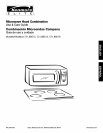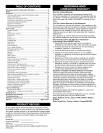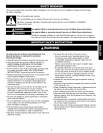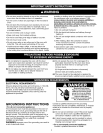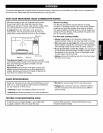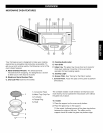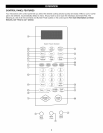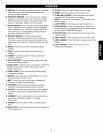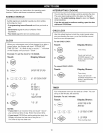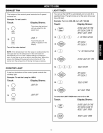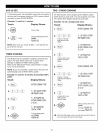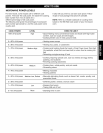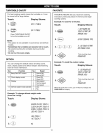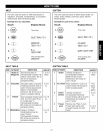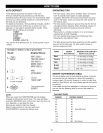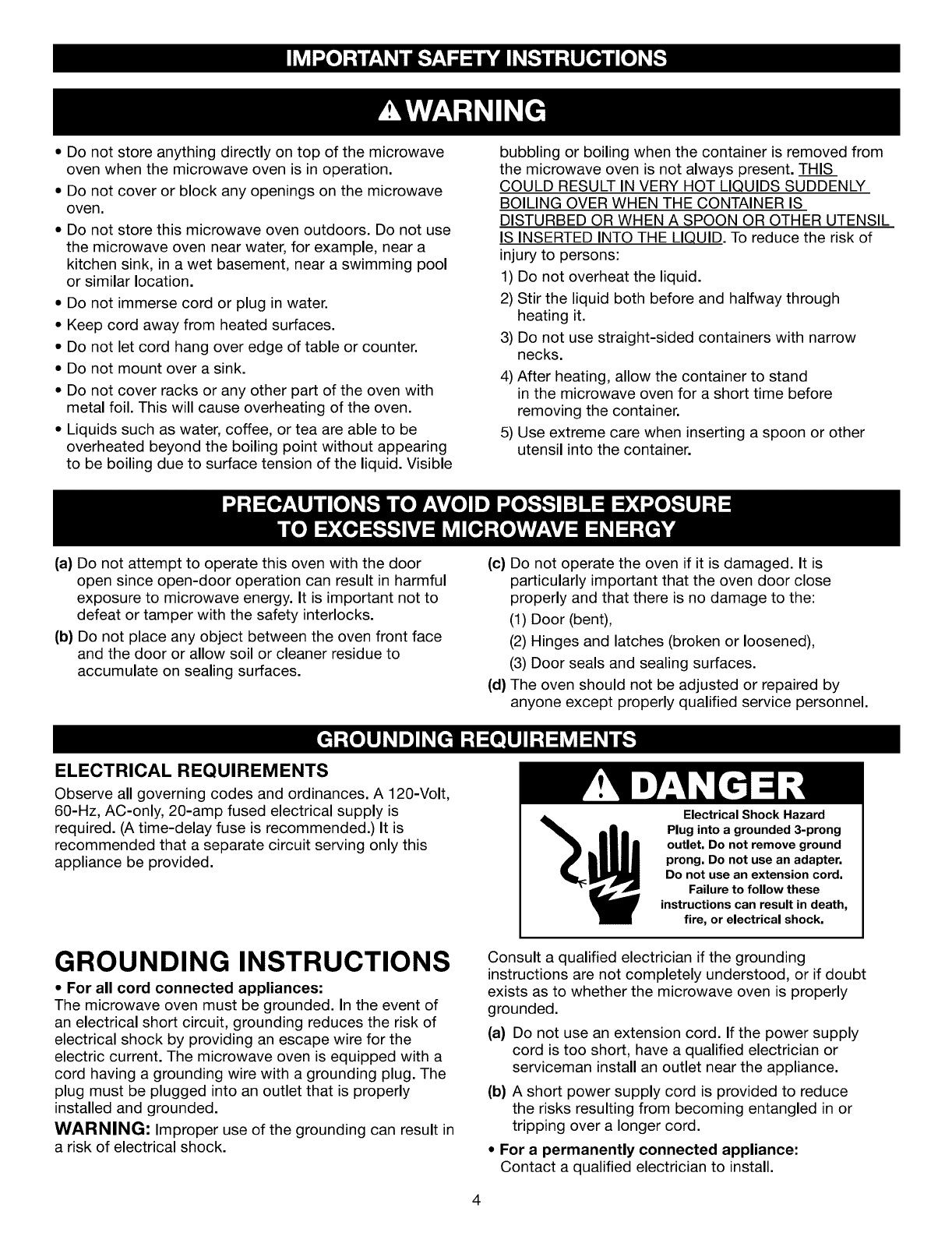
• Do not store anything directly on top of the microwave
oven when the microwave oven is in operation.
• Do not cover or block any openings on the microwave
oven.
• Do not store this microwave oven outdoors. Do not use
the microwave oven near water, for example, near a
kitchen sink, in a wet basement, near a swimming pool
or similar location.
• Do not immerse cord or plug in water.
• Keep cord away from heated surfaces.
• Do not let cord hang over edge of table or counter.
• Do not mount over a sink.
• Do not cover racks or any other part of the oven with
metal foil. This will cause overheating of the oven.
• Liquids such as water, coffee, or tea are able to be
overheated beyond the boiling point without appearing
to be boiling due to surface tension of the liquid. Visible
bubbling or boiling when the container is removed from
the microwave oven is not always present. THIS
COULD RESULT IN VERY HOT LIQUIDS SUDDENLY
BOILING OVER WHEN THE CONTAINER IS
DISTURBED OR WHEN A SPOON OR OTHER UTENSIL
IS INSERTED INTO THE LIQUID. To reduce the risk of
injury to persons:
1) Do not overheat the liquid.
2) Stir the liquid both before and halfway through
heating it.
3) Do not use straight-sided containers with narrow
necks.
4) After heating, allow the container to stand
in the microwave oven for a short time before
removing the container.
5) Use extreme care when inserting a spoon or other
utensil into the container.
(a} Do not attempt to operate this oven with the door
open since open-door operation can result in harmful
exposure to microwave energy. It is important not to
defeat or tamper with the safety interlocks.
(b} Do not place any object between the oven front face
and the door or allow soil or cleaner residue to
accumulate on sealing surfaces.
(c) Do not operate the oven if it is damaged. It is
particularly important that the oven door close
properly and that there is no damage to the:
(1) Door (bent),
(2) Hinges and latches (broken or loosened),
(3) Door seals and sealing surfaces.
(d) The oven should not be adjusted or repaired by
anyone except properly qualified service personnel.
ELECTRICAL REQUIREMENTS
Observe all governing codes and ordinances. A 120-Volt,
60-Hz, AC-only, 20-amp fused electrical supply is
required. (A time-delay fuse is recommended.) It is
recommended that a separate circuit serving only this
appliance be provided.
GROUNDING INSTRUCTIONS
• For all cord connected appliances:
The microwave oven must be grounded. In the event of
an electrical short circuit, grounding reduces the risk of
electrical shock by providing an escape wire for the
electric current. The microwave oven is equipped with a
cord having a grounding wire with a grounding plug. The
plug must be plugged into an outlet that is properly
installed and grounded.
WARNING: Improper use of the grounding can result in
a risk of electrical shock.
Electrical Shock Hazard
Plug into a grounded 3-prong
outlet. Do not remove ground
prong. Do not use an adapter.
Do not use an extension cord.
Failure to follow these
instructions can result in death,
fire, or electrical shock.
Consult a qualified electrician if the grounding
instructions are not completely understood, or if doubt
exists as to whether the microwave oven is properly
grounded.
(a) Do not use an extension cord. If the power supply
cord is too short, have a qualified electrician or
serviceman install an outlet near the appliance.
(b} A short power supply cord is provided to reduce
the risks resulting from becoming entangled in or
tripping over a longer cord.
• For a permanently connected appliance:
Contact a qualified electrician to install.



